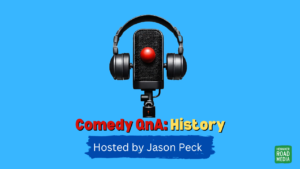I never really intended to write a follow up to my previous post Creating Killer Content Off the Cuff, but I have because both myself, and fellow speaker Eric Feng, blogged on the same subject. Eric spoke about the Borden method:
“Ho hum!” (or B-O-R-I-N-G!)
“Why bring that up?”
“For instance?”
“So what?”
and I spoke about how I used a Mind Map in order to quickly create a speech. And I became really intrigued to see how this would work!
With both techniques there isn’t really a lot of time to create a speech, so they are both good to do under pressure. I enclose a copy of my Mind Map.

If you know anything about Mind Maps you’ll see that this is not how they are normally done. What usually happens is that this stage where there are mostly circles is the first, idea-generating stage. You get the ideas down as quickly as possible and you try to find how they connect.
Then next stage you would then go on and do a Mind Map proper with the branches and capitalized text providing just a breif encapsulation of your ideas.
But as you can see it was literally just me throwing ideas down on the page because I was busy multi-tasking performing the role of time-keeper as well (and in case anyone’s wondering, I did do the job well).
The speech structure that I use was the traditional Toastmasters/basic speech structure:
– An opening.
– Three points each backed up with at least one example and then
– A conclusion.
In this case I used a technique called “re-open” which Paul Evans author of Instant Speaking Success discusses whereby you end with a mini challenge for your listeners to hopefully spur them into action.
I decided to go ahead and post the Mind Map because of some of the comment exchanges that I had with Eric Feng. I thought that it might be good to see if the Borden technqiue and Mind Mapping can be unified.
Then Eric suggested that I share my Mind Map to see how we can synergise.
(He also mentioned another technique called PREP: Point – Reason – Explanation – Point. This was something that I haven’t heard of and will look into).
But for now it’ll be interesting to see how we can synergise these techniques.




5 comments
1 pings
Skip to comment form
Hi Jason-
I have just checked it out – looks pretty cool – I like the bright colours.
Don’t you think that we should learn mind-mapping in school – it is such a powerful tool.
I used it to pass my honours degree – I managed to reduce 500 page text books to a few simple mindmaps.
(here’s my article on using mindmaps to write a speech http://blog.cdssolutions.co.za/2007/12/speak-part-2–.html)
Craig
Author
Hey Craig
Thanks for checking it out. As I said, it’s not perfect as I knocked it out in a matter of minutes. If I’d had the time I would’ve created it properly.
Yeah, when I did my A-Levels (U.K. high school qualification) my predicted grades were 2 Ds and 1 E for my three subjects. Through Mind Mapping I jumped two whole grades and finished with 2 Bs and 1 C.
I tried to teach the technique to my nephew as I agree with you it’s very valuable. But unfortunately he didn’t really want to learn as he couldn’t see the benefit…(?)
Now, in response to Eric Feng talking the Borden method which breaks down into these expressions:
“Ho hum!” (or B-O-R-I-N-G!)
“Why bring that up?”
“For instance?”
“So what?”
I think what could be an interesting way to synthesize this with Mind Mapping a speech is in the initial idea generation. That way you’re able to get your head round the topic.
You could map out the points that you want to make then ask yourself these questions so that you get really clear on why you’re making each point.
About time we had some London speaker blogs around. Yr mind-map is similar to something I saw last year concerning Web 2.0. Interesting stuff.
Author
Hey Jeremy
Thanks for stopping by. What was it you saw last year?
The mind map that I posted here was a very fast summation of some of the things that I know about Web 2.0. It’s by no means the final word on the subject.
I’ve still got plenty more to learn on the subject and I’m sure I shall devote further posts to this exciting development in the internet in the future.
Hi Jason,
I used Mind Maps when I was in a public speaking class.
I used them to pass all my LAMDA exams from Bronze Medal to ALAM Diploma. They were invaluable for the ‘impromptus’.
I taught my students to use them when I taught evening classes and when I have been a trainer at corporate Awaydays.
On Tuesday evening I will be speaking about Presentations to a businesswomen’s networking group in the New Forest, trying to pass on the most useful and relevant tips for them in just 40 minutes. Guess what will take up a fair amount of this time…?
I wrote recently about how they are also indispensable for speechwriting:
http://www.nickrthomas.co.uk/blog/_archives/2007/10/11/3283882.html
[…] for the Borden Method discussed in Eric Feng’s post and Mind Mapping as written about in my previous post could synergise. To start with we have from the Borden […]